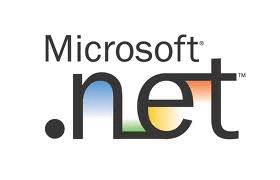Although we try our best to be impartial when it comes down to OS wars, and we have, throughout the years, presented the pros and cons of Windows, Linux, and other operating systems, you’ve probably noticed that NeoSmart Technologies isn’t too big on Apple. Well, color us purple, but this we have to talk about.
Apple [[AAPL]] has a new technology due to ship in Leopard that is pretty damn impressive to hear some of the developers (or at least those at liberty to discuss what they’ve been told) talk about it. According to this Wired News article, this framework will focus on making it easy for developers to add Next (Delicious) Generation graphics to their applications, bringing the concept of UI to a whole new playing field.
 While it sounds just plain awesome, we can’t help but look at it with mixed feelings. Since this is Apple and not Microsoft we’re talking about, we’re pretty darn sure everything they say can and will be found in the RTM release of OS X Leopard *cough* WinFS *cough*, but whether or not it will revolutionize the concept of user interfaces everywhere remains to be seen.
While it sounds just plain awesome, we can’t help but look at it with mixed feelings. Since this is Apple and not Microsoft we’re talking about, we’re pretty darn sure everything they say can and will be found in the RTM release of OS X Leopard *cough* WinFS *cough*, but whether or not it will revolutionize the concept of user interfaces everywhere remains to be seen.
Granted, the effects are supposed to be astounding. But that’s not the question, next-gen UIs (hereby dubbed “Desktop 2.0”) are almost always a matter of how and not what. As the Wired article states, these same “amazing” graphical innovations with the UI do already exist in certain programs (like Disco, the CD burning utility for OS X), the only difference is, Apple promises to make it much easier to get the same end results.
Continue reading →
 This post is for the C# developers out there and takes a look at the interesting conjunction of
This post is for the C# developers out there and takes a look at the interesting conjunction of 
 Hot on the heels of
Hot on the heels of 
 If you’re still stuck on .NET 2.0, 3.0, or 3.5 for any reason and don’t have access to the
If you’re still stuck on .NET 2.0, 3.0, or 3.5 for any reason and don’t have access to the 
 We are proud to present the latest addition to our open source portfolio,
We are proud to present the latest addition to our open source portfolio,  SecureStore
SecureStore While it sounds just plain awesome, we can’t help but look at it with mixed feelings. Since this is Apple and not Microsoft we’re talking about, we’re pretty darn sure everything they say can and will be found in the RTM release of OS X Leopard *cough* WinFS *cough*, but whether or not it will revolutionize the concept of user interfaces everywhere remains to be seen.
While it sounds just plain awesome, we can’t help but look at it with mixed feelings. Since this is Apple and not Microsoft we’re talking about, we’re pretty darn sure everything they say can and will be found in the RTM release of OS X Leopard *cough* WinFS *cough*, but whether or not it will revolutionize the concept of user interfaces everywhere remains to be seen.